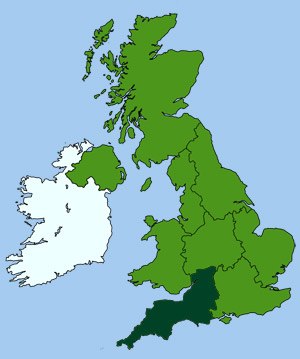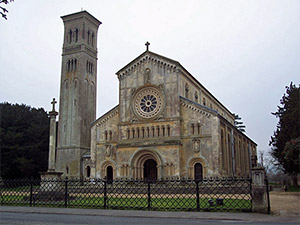Wilton
An old English market town, just west of Salisbury, that dates back several thousand years. During Anglo-Saxon times it was the capital of Wessex and the source of the county name Wiltshire (Wilton- shire). During the 9th century King Alfred established a benedictine convent here, on the site of what is now Wilton House.
In 1033 the town was sacked by invading Danes and later decimated by the Black Death, which along with several other misfortunes, caused the local government to move to Salisbury. Then in 1888, the town of Trowbridge was preferred due to its easier access to London, via Brunel's Great Western Railway.
Today Wilton is famous for its carpets, which
have been manufactured here since the 17th century.
This ancient weaving trade began
as a cottage industry and was given royal
status in 1699 by William III. The Wilton Carpet
Factory (on King Street) is still in operation today,
making some of the finest patterned weave carpets in
England, including unique and bespoke designs to order.
The town has a good range of independent shops, pubs and cafes. West Street is the main shopping thoroughfare, backed by many fine 17th-c dwellings faced with later shop fronts. The marketplace has an unusual market cross - a composite of early Christian artefacts. Outdoor markets are held on Thursdays and a country market takes place on Friday.
Not far from the market sits the ruins of the 15th-c St Mary's Church - established in 1229 before the completion of Salisbury Cathedral. However, the church was abandoned in the mid 19th-c in favour of the impressive Italian romanesque Basilica of St Mary and St Nicholas. This spectacular cathedral like building was commissioned by the Dowager Countess of Pembroke and her son, to a design by the architect Thomas Henry Wyatt.
Wilton Shopping Village, located just to the east of the town centre, is a bespoke retail outlet situated in one of the town's historic 18th-c carpet factory buildings. It provides a mix of independent outlets, studios and retailers, selling a wide range of goods from whiskey to clothes.
The River Wylye runs through Wilton and joins
the Nadder, just to the south of the town. Where
it flows through wide flat meadowlands that provide
peaceful river walks.
Places to Visit in Wilton
Wilton House

The ancestral home of the Earls of Pembroke since 1544. The house has a very fine art collection and museum. It stands on the site of the abbey originally founded by Alfred the Great. The house was rebuilt by Indigo Jones and John Webb after a disastrous fire in 1647. Inside there is superb collection of paintings and an impressive display of model soldiers from the 19th-c. The house is set in over 20 acres of landscaped parkland and formal gardens, along side the River Nadder. The garden is noted for its magnificent Cedar trees.
Opening times: Apr~Oct,
daily, 10.30am to 5.30 pm (House closed Mon, ex BHs) Admission
Charge
Location: Wilton SP2 OBJ
Tel: 01722 746720
Website: wiltonhouse.co.uk
Image Credit: Richard
Sutcliffe (CC2)
Map of Wilton
South West England

Towns and Villages in Wiltshire
Attractions in Wiltshire
Attractions in Salisbury: Medieval Hall | Mompesson House | Salisbury Cathedral | Salisbury Museum
Attractions in Swindon: Coate Water | Lydiard Park | Richard Jefferies Museum | STEAM



